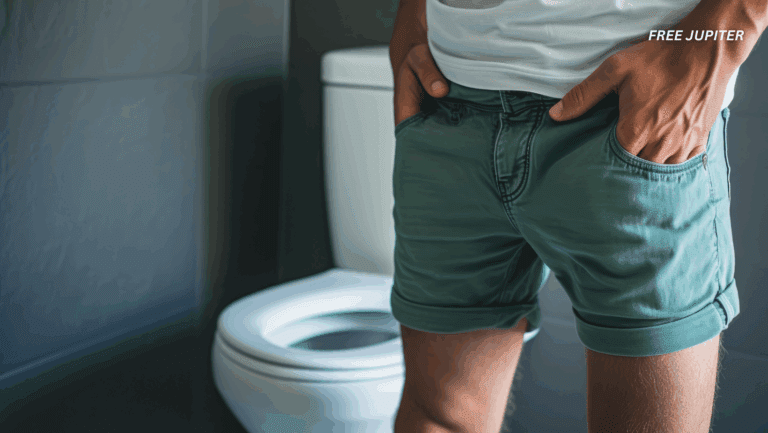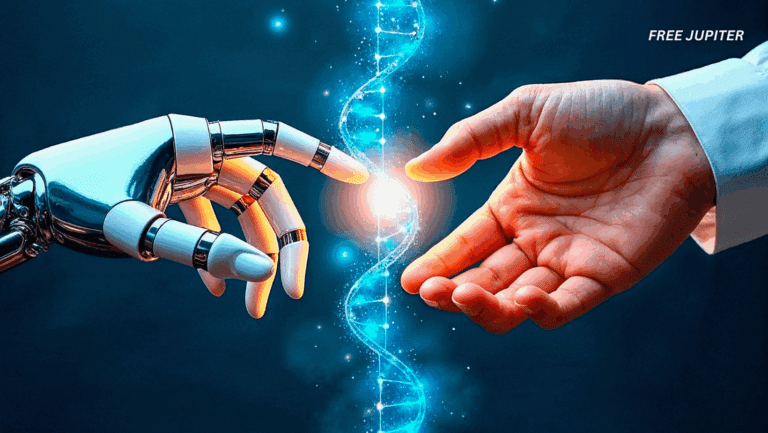Aging is usually measured by the number of candles on your birthday cake, but your body tells a deeper story. Deep inside your cells, there’s another kind of aging going on — one that doesn’t care how many years you’ve been alive. It’s called biological aging, and surprisingly, you can slow it down — not with magic, but with movement. In fact, a certain type of exercise may roll back your internal clock by up to nine years.
Sounds like science fiction, but it’s not. Here’s how this fascinating link between sweat and cellular youthfulness works.
What Is Biological Age, and Why Does It Matter?
Let’s start with the basics. Chronological age is simply the number of years you’ve been on Earth. But biological age measures how well your body’s systems — like your heart, brain, skin, and immune system — are functioning compared to others your age.
Someone might be 45 on paper but have the internal health of a 35-year-old. Another person might be 30 but already showing signs of cellular wear and tear. That’s where biological aging comes in.
🧬 Telomeres: Your Cellular “Shoelace Tips”
The secret to tracking biological age lies in structures called telomeres. These are like tiny protective caps on the ends of your DNA strands — much like those little plastic tips at the end of your shoelaces that keep them from fraying.
Every time a cell divides, the telomeres get a little shorter. Once they become too short, the cell either dies or becomes inactive. In short, short telomeres = older cells. And studies have linked shorter telomeres to serious age-related issues like heart disease, cancer, and cognitive decline.
This makes telomeres a powerful marker of how “aged” your body really is on a cellular level.
Read more: Just Two Years of Exercise May Reverse Age‑Related Heart Damage, Study Shows
The Study That Shook the Treadmill
A team of researchers from Brigham Young University examined data from over 5,800 adults, ages 20 to 84, using information from a large national health survey. They looked specifically at the participants’ telomere lengths and physical activity levels.
💥 The Results? Exercise Slows Cellular Aging
People who engaged in high levels of physical activity — specifically the kind that gets your heart rate up and sweat flowing — had significantly longer telomeres than people who were inactive or only moderately active.
The telomere difference wasn’t minor. It translated to a biological age that was nearly 9 years younger in the highly active group compared to the sedentary group. That’s like having the body of someone in their 30s when you’re actually pushing 40.
Here’s what “high activity” looked like in the study:
- Women: Jogging or equivalent activity for at least 30 minutes a day, 5 days a week
- Men: Jogging or equivalent activity for at least 40 minutes a day, 5 days a week
This level of effort wasn’t about casual strolls. It required a consistent, heart-pounding effort that left participants breathless — and younger, at least on the inside.
Why High-Impact Exercise Makes a Cellular Difference
It’s not just about burning calories or looking fit. High-intensity and high-impact exercise appears to stimulate powerful biological processes that protect cells.
Here’s what happens inside your body when you push your limits:
- Reduced Oxidative Stress
Intense exercise helps balance free radicals and antioxidants, reducing damage to cells and DNA. - Enhanced Telomerase Activity
Telomerase is an enzyme that rebuilds and protects telomeres. High levels of exercise may increase telomerase activity, keeping telomeres longer for longer. - Lower Inflammation
Chronic inflammation is a major driver of aging. Sweaty workouts help reduce it at the cellular level. - Improved Mitochondrial Function
Your cells’ energy powerhouses get a boost from regular training, helping them stay efficient and youthful.
What If You Don’t Like Running? Good News — You’re Not Stuck
Jogging is great, but it’s not the only route to internal youth. In fact, any exercise that gets your heart racing and muscles working hard can trigger similar benefits.
Read more: Aging Has Been Found To Occur In Three Stages: 34, 60, and 78, Study Shows
Alternatives to High-Impact Jogging:
- HIIT (High-Intensity Interval Training)
Short bursts of all-out effort (like sprinting or burpees) followed by brief rest. Efficient and effective. - Cycling Sprints or Spin Classes
Stationary or outdoor cycling at high speed for intervals. Joint-friendly and scalable to your fitness level. - Rowing Machine Workouts
A full-body cardio + strength combo that also improves posture and lung capacity. - Stair Climbing or Hiking on Inclines
Add resistance and intensity without going full-out on a treadmill. - Dance-Based Workouts (Zumba, cardio hip-hop)
Burn calories while having fun. Bonus: It’s great for coordination and mood.
The magic lies in effort and consistency, not in any one specific workout.
New to High-Intensity Exercise? Here’s How to Start Smart
If you’re not used to exercising regularly, jumping straight into high-intensity routines can feel daunting. But don’t worry — you can build up slowly. One beginner-friendly method is Jeffing, a technique that combines jogging and walking in intervals.
How to Try Jeffing:
- Jog for 30 seconds, walk for 1 minute
- Repeat for 20–30 minutes
- Gradually increase jogging time and reduce walking time as you build endurance
The key is progressive overload — challenge yourself just a bit more each week, and soon enough, you’ll be comfortably jogging or interval training like a pro.
So, Is It Really Worth It?
Absolutely. Aside from keeping your telomeres long and your cells young, high-intensity workouts also:
- Boost your mood by releasing endorphins
- Improve sleep quality
- Strengthen your heart and lungs
- Increase insulin sensitivity
- Sharpen cognitive function
- Help maintain a healthy weight
And the best part? These benefits start to kick in as soon as you make exercise a habit. Even modest improvements in your weekly routine can start shifting your biological age in the right direction.
Read more: Anti-Aging Tech Millionaire Tries Anti-Aging Drug—Ends Up Aging Even Faster
Final Thoughts: You Can’t Stop Time, But You Can Slow It Down
Aging is inevitable, but how you age is something you can influence — dramatically, it seems. While there’s no magic pill for youth, consistent, intense physical activity may be the closest thing science has found to a cellular time machine.
If you can find a workout you enjoy — whether it’s sprinting, cycling, dancing, or rowing — and stick with it, your cells might just thank you by staying stronger, longer.
So, dust off those sneakers, turn up your favorite playlist, and get your sweat on. Your future self — and your telomeres — will be grateful.










